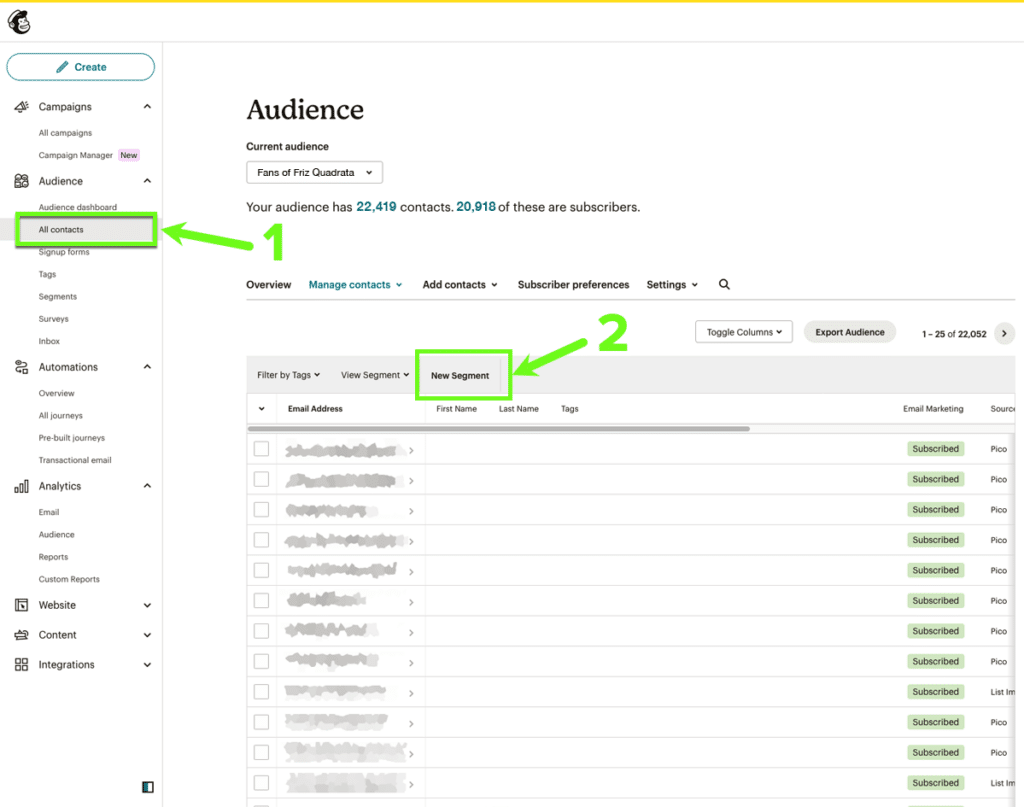What to do when Mailchimp segments aren’t working
What do you do when your Mailchimp segments aren’t working?
Not working in this situation means the segments aren’t sent to everyone in the segment you built. For example, the segment has 2,000 subscribers, but a campaign sent to that segment only goes to 1,700 people.
Two clients recently ran into this problem with Mailchimp segments not working. This wasn’t a deliverability problem where emails landed in the spam folder. Mailchimp wasn’t sending the emails at all, despite contacts being subscribed and meeting all the conditions.
This wasn’t an issue of a dynamic list where subscribers were coming and going. The segments were for the regular newsletters in each case, so they typically grew each week. Losing 1,000 sends week-over-week is a red flag. It’s even redder when they come back the following week.
In one case, the difference was over 1,000 contacts. All 1,000 contacts met the segment conditions, yet Mailchimp wasn’t sending to them. One week, it worked as designed. The next week, it omitted hundreds of random subscribers. It wasn’t consistent at all.
Unable to diagnose, I opened a ticket with Mailchimp. After a few days, a technical support person told me there are two known issues interfering with accurate segments in Mailchimp.
These problems occur when:
- Creating segments inside the campaign settings as you build the email.
- Using the new Segments Builder when you go to Audience > Segments in the side menu.
According to Mailchimp, these are known bugs that return inaccurate segments, and they say they are working to fix them.
How to build Mailchimp audience segments to avoid known bugs
Mailchimp technical support advised me to build new segments using the Audience > All Contacts menu. This is the old way to define segments before the new builder, and the screen looks like this:

From any screen, (1) click “All contacts” under the Audience menu on the left sidebar. On that Audience screen, (2) you can click “New Segment” to open the conditions to define the segment, then save it.
Does this method fix other Mailchimp segmentation problems?
It probably won’t hurt to update any important Mailchimp segments you are using. If you do update, be sure to test and verify that it’s working as expected.
However, before making all new segments, I’d go through each condition with a fine-toothed comb to see if there are problems unrelated to the bugs. The most common mistake is easy to fix: Make sure you use the correct selector: ANY vs. ALL. Choosing ANY means that if a contact matches any of the conditions, it will be included. Choose ALL means that a contact must meet each condition. It’s easy to mix these up.
Secondly, make sure your conditions are narrow enough. For example, let’s say you have a Premium Subscriber Status in Mailchimp, with the following options:
- Premium Subscriber
- Premium Subscriber (Free Trial)
- Ex-Premium Subscriber
- Premium Gift Subscription
- Blank
If you wanted a segment that only includes people who are active paying subscribers, the following condition would select everyone but the contacts with a blank status:

Using “contains” grabs the ex-subscribers, the free trials and the gift subs, because those all contain the word “Premium”. Using “starts with” would run into a similar problem. In this case, we would probably use Premium Subscriber Status is “Premium Subscriber.” Easy enough, right?
If you still notice inaccurate segments in Mailchimp after review, it’s worth trying this method to see if it helps.
For now, I’ve redefined my clients’ segments. I’m keeping a close eye on if this fixes this problem. I will update this post if new information comes up about this issue.






